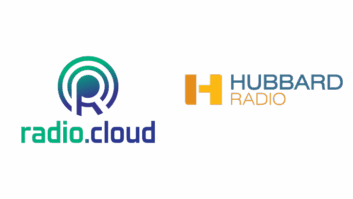
Emily Botein, producer and editor, left, and Chris Bannon, vice president for content development and production at WNYC, work on an episode of ‘Here’s the Thing.’
“Stayed up way too late last night listening to the Billy Joel interview — laughing out loud in bed and singing along. It was funny, dynamic and one of the best interviews I’ve ever heard. Bravo!”
— Maureen from Milwaukee, “Here’s the Thing” Listener
What happens when your station’s biggest fan becomes its biggest star? WNYC(FM) certainly found out when they put actor Alec Baldwin behind a Neumann U87 with “Here’s the Thing,” an original made-for-podcast topical guest interview show.
A recent program with guest Thom Yorke of Radiohead generated more than 100,000 clicks in three days at the WNYC website.
But here’s the thing about “Here’s the Thing.” After a season of podcasts is in the can, they are repackaged and syndicated to around 160 affiliates. After that, to come full circle, those shows are then finally broadcast on WNYC.
Aren’t they doing things a little … backwards?
According to WNYC spokeswoman Jennifer Houlihan Roussel, “We sell the podcast and the broadcast platforms separately. Sometimes an underwriter chooses to buy both, but not always. When the broadcasts are distributed to the local markets, the national credits embedded in the shows remain, but local markets have their own ad breaks (avails) as well. We have an ad management system for the podcast units that allows us to rotate in multiple underwriters in any given time.”
The HTT staff is currently editing the 2013 syndicated series, producing 10 one-hour shows drawn from the 26 original podcasts.
This product reaches three unique audiences for “HTT.” There’s WNYC’s initial single-interview podcast, available at the station’s website. Some are over an hour long. The next leg is the one-hour syndicated version, containing excerpts from one to three interviews each. Last, there’s the WNYC on-air broadcast of that syndicated anthology.
PRX, the Public Radio Exchange, will distribute the latest series in the fall of 2013.
PRX makes the “deal” with affiliates clear and simple: “Each episode is 59 minutes long, and includes two, one-minute floating ID breaks. There is no newscast hole. All programs in the fall season must be scheduled — cherry-picking is not permitted.”
WNYC is repurposing and maximizing its content on multiple platforms.
OPENINGS
Alec Baldwin opens “Here’s the Thing,” personally voicing the intro and the sponsor’s message, a la Paul Harvey and Charles Osgood, as the show’s theme rolls, a sweet music bed of Miles Davis’ melodic “So What.” It’s all very low-key and smooth, with Baldwin at his best. Or as WNYC’s Chris Bannon, vice president for content development and production, gushes, “Any advertiser, any underwriter in the world, would love to have Alec Baldwin read their copy no matter what it is.”
According to Bannon, Baldwin’s involvement was classically evolutionary.

Host Alec Baldwin
Credit: Mary Ellen Matthews “Baldwin’s a Manhattanite,” Bannon related. “He used to call in to the ‘Brian Lehrer Show,’ talk to listeners and people really liked that. Then Kurt Andersen, who hosts ‘Studio 360,’ WNYC and PRI’s nationally syndicated arts and culture show, asked Alec if he would be a guest host; the first-ever.”
Baldwin went on to host the New York Philharmonic broadcast plus fundraising spots on WNYC. Then independent producer Kathie Russo, now a producer at HTT, suggested to Baldwin, in so many words: “Alec, how about cutting a pilot, maybe interviewing a friend?” That friend was actor Michael Douglas.
“Here’s the Thing” was born.
Alec Baldwin’s appeal? Impeccable acting credentials, industry cred, unfettered access to fellow celebrities and stars. Add-in a passionate, highly-literate, provocative interview style coupled with insatiable curiosity.
Baldwin insists on engaging his subjects in person, eye-to-eye, which produces great theater, spontaneity and superb audio, but real challenges, too; thus, there are no remote studio bookings via ISDN for out-of-town guests, or even Baldwin calling in on location.
MECHANICS
So how does HTT get the talent together into a studio? The correct answer is: anyway, anywhere they can. At WNYC’s facility, or New York’s Radio Foundation studio, or in the case of New York Times Editor Jill Abramson, at a studio “just around the corner from her office,” one properly equipped with Pro Tools and a Neumann U87. Priority one is accommodating guests and their busy schedules. Therefore much of the production is done at the guest’s location.
Flexibility is also a key, as with Baldwin’s interview with talk show legend Dick Cavett, which took place at Cavett’s home in Montauk on Long Island. HTT’s producers decided on a documentary approach, bringing in a crew with Sennheiser shotguns on booms while recording to a Sound Devices 722 digital recorder.
The result was a refreshing, very-editorial departure from their studio efforts. After post-production, Baldwin’s intro is a work of art, adding VO commentary over a ducked scene-setting background conversation, complete with traces of room noise. Or, as Baldwin explained: “For our listeners, that sound you are hearing is the rattle of iced tea being delivered into the parlor here …” while Cavett jokingly comments on the “very attractive employee” with the tea. i.e. his wife Martha. There is absolutely no “mic consciousness” for these two pros. The listener feels like they are sitting on the couch as an invited guest, taking all this in. A captivated listener might actually look around for their glass of iced tea.
Baldwin’s passionate in-your-face interviewing style, at least initially, was annoying to some. One fan posted the following after hearing his show with actor/singer Patti LuPone: “A nice, interruption-free interview. A little kiss-assy (‘You’re BREATHTAKING’),” but then, this is part of the charm.
An actor by trade and not a radio program host, Baldwin brought an aggressive style that initially led him to step on guests. Emily Botein, producer, program editor and Pro Tools “nudger,” explained, “Alec is very aware of his interruptions. His enthusiasm sometimes bleeds over into interrupting his guests. He doesn’t like it, I can tell you that. He’s very conscious of it.”
For Baldwin, who reads his own notices, this consciousness led to a subsequent change in style. “If you listen to the first podcast vs. the most recent ones, you’d see a real evolution in the way that he interacts with guests in terms of those interruptions,” Botein said. “He’s disciplined himself like the actor that he is. When you’re learning a role, you learn what to do that’s going to make you more effective.”
WNYC’s Bannon has a slightly different take on Baldwin’s style, but no less insightful. “One of the things that’s great about having someone with Alec’s career in the role of host is that he comes from a lifetime of being aware of the audience. He’s got a lot of intention. Behind every question is, ‘What will this make people think or feel?’ You can’t teach that to someone.”
A look at the variegated guest list might also lend a clue to the appeal of the show. Like any guest-oriented radio show, certain themes dominate. Baldwin is a New York-based actor so there’s no surprise that a number of Broadway and Hollywood actors have been on the show — from Elaine Stritch and Patti LuPone to Debbie Reynolds.
But Baldwin has thrown the producers for a loop at times. Like the time he suddenly said he was “interested in prisons.” Lo and behold, a more newsy and topical show with Martin Horn, former New York City commissioner of correction and probation. There’s a show with pro football player Andrew Luck and there’s that Thom Yorke piece.
“The beauty of doing this kind of work is that there’s is a very, very long tail,” says Bannon. “The listener may have just discovered the shows through the Thom Yorke podcast, then goes back and listens to every program, all the way back to Michael Douglas.”
“With the right host, it’s work that is very durable.”
Christopher Springmann is the producer of the syndicated health talk show “Life, Love & Health.”







